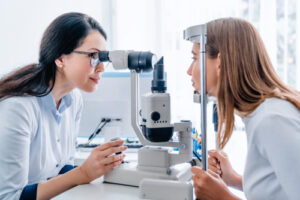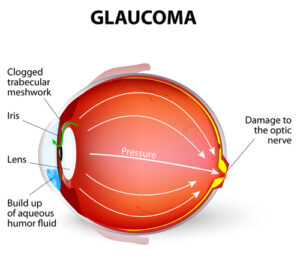Do you wear glasses or contact lenses? If you use visual aids to see, you need to see your eye doctor regularly.
You should have an eye exam every year to update your prescription. But what if you don’t need to use glasses or contact lenses and don’t have any issues with your vision?
Even if you have good eyesight, you still need to see an eye doctor. However, you may not know how often to have your eyes examined.
The answer to this depends on a few things. These factors can include things like your age and medical history.
If you’re a healthy young adult, you may not need an eye exam every year, although you should still have them. But this changes if you’re still in your teens or over 40.
You still need a regular eye exam at least once a year in these age ranges. Scheduling eye exams are about more than your eye doctor checking the state of your vision.
They are also about assessing how healthy your eyes are. During these appointments, your eye doctor can spot early signs of eye conditions, often before you experience symptoms.
Keep reading to find out more about annual eye exams and learn if they are necessary!
The Importance of Eye Exams

Routine eye exams are vital for children, adolescents, and adults over 40. These are the age groups where eye conditions are most common.
Many eye conditions usually develop in childhood, from simple refractive errors to more concerning conditions. Regular eye exams help your child get the necessary care to grow up with healthy eyes.
For older adults, there are many age-related eye conditions. These include presbyopia, cataracts, glaucoma, and macular degeneration.
Presbyopia

Some of these conditions can be inconvenient, making it harder to see, like presbyopia. Presbyopia develops when the natural lens starts losing flexibility as part of aging.
It’s inevitable and something that everyone goes through. It becomes harder to see things up close with a lens that’s lost flexibility.
Age-Related Macular Degeneration
Other eye conditions can rob you of your central vision, like age-related macular degeneration (AMD). Macular degeneration occurs when you lose sight in the center of your field of vision.
Although there is no cure for AMD, treating it is the only way to manage it and keep the condition from progressing further.
Glaucoma

Glaucoma is another eye condition that’s often called the silent thief of sight. With glaucoma, there are usually no symptoms before irreversible vision loss occurs.
The only way to prevent vision loss from glaucoma is early diagnosis and treatment, which you can only get if you schedule regular eye exams with your eye doctor. Your best line of defense against any eye condition, but especially glaucoma, is eye exams.
If you’re between adolescence and middle age and don’t need glasses or contact lenses, you may not need to see your eye doctor every year. But if you’re considered someone at risk, you may need eye exams sooner and on a more frequent basis.
At-Risk Patients

Most patients considered at risk for eye conditions like cataracts and glaucoma are at risk because of their age. But other factors put you at a higher risk for developing eye conditions.
If you have diabetes, high blood pressure, or a family history of certain eye-related conditions, you may need to see an eye doctor regularly before age 40. The only way to know if you should see an eye doctor more frequently is to go and see one.
They can recommend how often you should have your eye exams based on your pre-existing conditions and risk for certain eye diseases. But if you’re under 20 or over 40, most eye doctors will recommend bi-annual or annual exams regardless of other risk factors.
How Often You Need an Eye Exam
You need annual exams from birth through to your late teens or early twenties. If you’re at low risk, you only need to see an eye doctor every few years in your 20s and 30s.
You should see one sooner if you’re diagnosed with any condition that increases your risk of developing any eye conditions. Regardless of your medical history, you should have an eye exam once every two years after you’ve turned 40.
Your eye doctor may also recommend you have annual eye exams if you’re at higher risk. But regardless of any other factors, you should have yearly eye exams once you’re in your 60s.
You may also need them annually sooner based on your risk, as many conditions that put you at risk can develop when you’re in your 40s and 50s. Always ask your eye doctor what they recommend for you based on what they know about your eye health and overall medical history.
If you have a prescription for contacts or glasses, have your eyes examined every year regardless of your age. Your eyes may change, making it necessary to have an updated prescription.
When To Call an Eye Doctor

Besides scheduling regular eye exams, you should always call your eye doctor if you experience visual changes or persistent eye discomfort. Sudden changes to your vision can indicate serious issues that may require prompt treatment.
See an eye doctor as soon as you can if you experience sudden flashes and floaters in your vision. For more gradual and chronic visual problems, it’s still good to see your eye doctor as soon as possible.
Your eyes shouldn’t feel itchy, watery, dry, gritty, or inflamed, as these are signs of dry eye syndrome. If you experience these symptoms regularly, you should see your eye doctor for professional treatment.
If you ever experience eye symptoms that don’t go away or don’t respond to over-the-counter medication, schedule an eye exam. Even if the issue is minor, your eye doctor can prescribe treatment to relieve your symptoms.
Are you ready to make your eyes a priority? Schedule an appointment at South Texas Eye Institute in San Antonio, TX, today!

